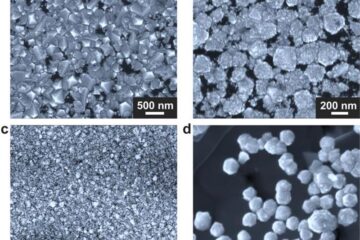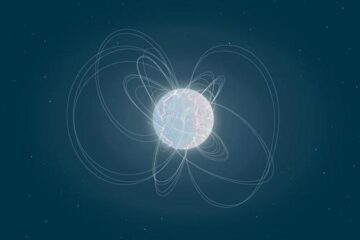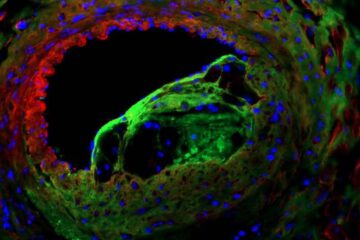Researchers explore plankton's shifting role in deep sea carbon storage

In a study published this week in the journal Global Change Biology, SF State Assistant Professor of Biology Jonathon Stillman and colleagues show how climate-driven changes in nitrogen sources and carbon dioxide levels in seawater could work together to make Emiliania huxleyi a less effective agent of carbon storage in the deep ocean, the world's largest carbon sink.
Changes to this massive carbon sink could have a critical effect on the planet's future climate, Stillman said, especially as atmospheric carbon dioxide levels continue to rise sharply as a result of fossil fuel burning and other human activities.
While floating free in the sunny top layers of the oceans, the phytoplankton develop elaborate plates of calcified armor called coccoliths. The coccoliths form a hard and heavy shell that eventually sinks to the ocean depths. “About 80 percent of inorganic carbon trapped down there is from coccoliths like these,” said Stillman.
Stillman and his colleagues wanted to discover how ocean acidification and changes in the ocean's nitrogen cycle—both hallmarks of climate warming—might effect coccolith development. So they raised more than 200 generations of Emiliania huxleyi in the lab, adjusting carbon dioxide levels and the type of nitrogen in the phytoplankton's seawater bath.
They found that high levels of carbon dioxide—which make the water more acidic—along with a shift in the prevailing nitrogen type from nitrates to ammonium—”had a synergistic effect” on the phytoplankton's biology and growth.
In particular, coccoliths formed under conditions of high carbon dioxide and high ammonium levels were incomplete or hollow, and contained less than the usual amount of inorganic carbon, the researchers noted.
“The ratio of inorganic to organic carbon is important,” Stillman explained. “As inorganic carbon increases, it adds more ballast to the hard shell, which makes it sink and makes it more likely to be transported to the deep ocean. Without this, the carbon is more likely to be recycled into the Earth's atmosphere.”
“Our results suggest in the future there will be overall lower amounts of calcification and overall lower amount of transport of carbon to the deep ocean,” he added.
Emiliania huxleyi typically use nitrates to make proteins, but this form of nitrogen may be in shorter supply for the phytoplankton as the world's oceans grow warmer and more acidic, Stillman and colleagues suggest. In the open ocean, nitrates are upwelled from deep waters, but a thickening layer of warmer surface water could inhibit this upwelling. At the same time, the warmer temperatures favor bacteria that turn recycled nitrogen from surface waters and the atmosphere into ammonium, and acidification inhibits the bacteria that turn ammonium into nitrate.
“It is likely that in the future, the ocean surface will contain more ammonium,” which the phytoplankton will assimilate instead of nitrates, Stillman suggested. “Metabolizing nitrogen as ammonium versus nitrates requires different biochemical constituents that impact how well the cells make their coccoliths. They will survive just fine, but their biology will be different as a result.”
The study by Stillman and colleagues is the first to look at the intertwined effects of ocean acidification and changes in nitrogen on phytoplankton like Emiliania huxleyi. It's also one of the first studies to observe these effects continuously over a long time scale, “so the responses of the phytoplankton are likely what we'll see in the ocean itself,” Stillman said.
Stephane Lefebrve, the SF State postdoctoral student who developed the experiments for the study, said he is now looking for phytoplankton genes that “will help us to build the genetic blueprint of their responses to elevated carbon dioxide and a nitrogen source”
Lefebvre, Ina Benner, Alexander Parker, Michelle Drake, Pascale Rossignol, Kristine Okimura, Tomoko Komada, and Edward Carpenter, all from SF State's Romberg Tiburon Center for Environmental Studies, were co-authors on the Global Change Biology study.
“Nitrogen source and pCO2 synergistically affect carbon allocation, growth and morphology of the coccolithophore Emiliania huxleyi: implications of ocean acidification for the carbon cycle,” was published online in October by the journal Global Change Biology.
Jonathon Stillman and Stephane Lefebvre may be reached by contacting Nan Broadbent at SF State: nbroadbe@sfsu.edu or at 415-338-7108.
Media Contact
More Information:
http://www.sfsu.eduAll latest news from the category: Life Sciences and Chemistry
Articles and reports from the Life Sciences and chemistry area deal with applied and basic research into modern biology, chemistry and human medicine.
Valuable information can be found on a range of life sciences fields including bacteriology, biochemistry, bionics, bioinformatics, biophysics, biotechnology, genetics, geobotany, human biology, marine biology, microbiology, molecular biology, cellular biology, zoology, bioinorganic chemistry, microchemistry and environmental chemistry.
Newest articles

Making diamonds at ambient pressure
Scientists develop novel liquid metal alloy system to synthesize diamond under moderate conditions. Did you know that 99% of synthetic diamonds are currently produced using high-pressure and high-temperature (HPHT) methods?[2]…

Eruption of mega-magnetic star lights up nearby galaxy
Thanks to ESA satellites, an international team including UNIGE researchers has detected a giant eruption coming from a magnetar, an extremely magnetic neutron star. While ESA’s satellite INTEGRAL was observing…

Solving the riddle of the sphingolipids in coronary artery disease
Weill Cornell Medicine investigators have uncovered a way to unleash in blood vessels the protective effects of a type of fat-related molecule known as a sphingolipid, suggesting a promising new…





















